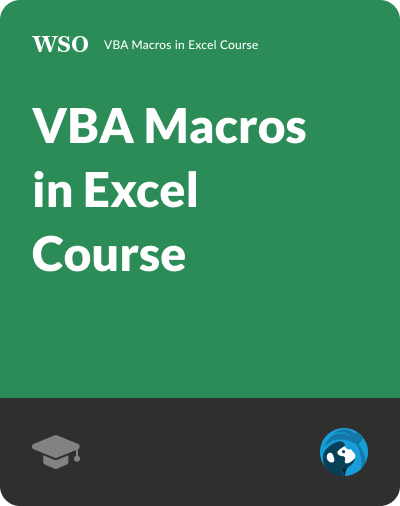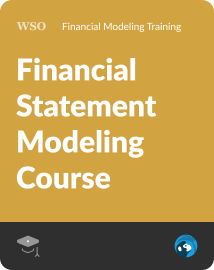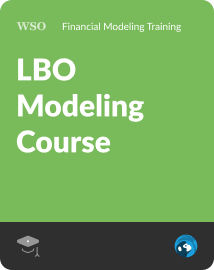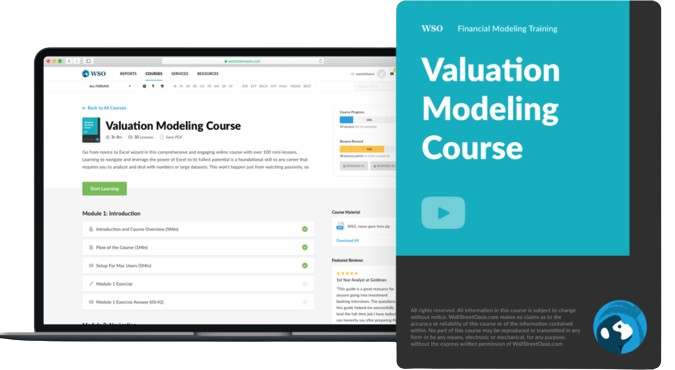Exchange Traded Fund (ETF)
A basket of securities that can be bought and sold through a brokerage firm on a stock exchange
What Is An Exchange Traded Fund (ETF)?
An Exchange Traded Fund (ETF) is a basket of securities bought and sold through a brokerage firm on a stock exchange.
The first ETF was created in the 1990s, eventually transforming the investment ecosystem by offering the advantages of merged investing and trading flexibility. As of 2021, ETFs have an estimated value of $5.83 trillion, with around 2,354 ETF products traded on the US stock exchange.
ETFs work by keeping track of a market index or commodity. Those tracking a market index are called index funds. ETFs can also be managed by an active fund manager aiming to outperform a benchmark index by carefully selecting their stocks.
The expense ratio is a fee the investors pay to the fund house for managing their money. The expense ratio for passively managed funds is much lower than for active funds that try to beat the market.
Key Takeaways
-
The Exchange Traded Fund (ETFs) provide diversified investment opportunities with the ability to track various assets, from bonds to commodities, making them versatile for investors.
-
ETFs are cost-effective due to lower expense ratios and offer accessibility with low minimum investment requirements, making them accessible to both novice and experienced investors.
-
They may have limitations, such as difficulties in purchasing partial shares and the potential for hidden risks and tracking errors in complex ETFs.
-
Compared to mutual funds, ETFs have distinct pricing mechanisms, with ETF prices fluctuating throughout the trading day, and tend to be more tax-efficient.
Types Of ETFs
Let us take a look at some of the different types of ETFs below:
-
Bond ETFs: Aims to bring exposure to virtually every type of bond available: US Treasury, corporate, municipal, international, high-yield, and several more
-
Commodity ETFs: Designed to provide exposure to a specific industry, such as oil, pharmaceuticals, or mining.
-
Foreign market ETFs: Created to track non-US markets like Japan’s Nikkei Index or China’s Shanghai SE Composite Index.
-
Actively managed ETFs: Designed to outperform an index instead of simply tracking one.
-
Inverse ETFs: Designed to make a profit from a decline in the underlying market or index, but they do so by using derivatives and short positions
-
Exchange-traded notes (ETNs): Unsecured debt securities that are issued by financial institutions. They do not provide their holders control of the asset but instead receive the return that the index generates.
Among these various types of ETFs, the actively managed one is an effective investment strategy that has provided several benefits.
The underlying concept here is that a fund manager will adjust the fund's investments as desired while tracking the index like a passively managed ETF aims to do. The active fund manager will aim to beat a benchmark through research and strategies.
Advantages Of ETFs
ETFs bring numerous advantages to investors regarding investment choice, ease, and expense. Moreover, they also consist of a basket of stocks and various securities, eventually making them low-risk investments.
Below are some of the most common perks of ETFs:
1. Diversification
Whenever we buy an ETF, we simultaneously purchase hundreds or even thousands of different securities in a single trade. This practice spreads the risk of investing. Making use of ETFs further allows an investor to quickly and easily build a portfolio that comprises a variety of asset classes.
2. Accessibility
They require low investments, meaning that anyone looking forward to getting started can do so with little money. A person can build his portfolio of ETFs with only a few hundred dollars.
3. Cost-Effectiveness
ETFs can be cost-effective in many ways. To give a clear example, let’s say you go and buy all 500 stocks that make up the S&P 500. In that case, paying the broker every time a stock purchase is made is compulsory.
When summed up, these fees can put a toll on the total return from investments. This is where ETFs play an essential role as they allow someone to buy all 500 shares in one go while only paying one brokerage fee, reducing the cost of building a diversified portfolio.
4. Tax-efficient
ETFs are structured to make only minimal capital gains distributions, hence keeping tax liabilities lower for investors.
Disadvantages of ETFs
ETF trading comes with some drawbacks, which include the following:
1. Partial shares may not be available
It might be hard for investors to buy partial shares of ETFs. Even if it might not necessarily be a huge setback, it can make investing more complex. For example, an individual wanting to invest $500 every paycheck with a broker that doesn’t allow partial investing will need to calculate the number of whole shares he can purchase.
Unlike ETFs, mutual funds make it possible for investors to buy partial shares, meaning that anyone can invest $500 weekly without any problem.
2. Hidden risks
Considering the variety of ETFs to choose from, a mix of several assets in a single basket of funds can sometimes prove to be complex and contain risky securities that might not be so obvious at the beginning. Moreover, ETFs are prone to volatility, just like any other investment.
It is, hence, essential for investors to research ahead on the index the ETF is tracking and get a good understanding of their associated risks.
3. Tracking errors
While an ETF manager or expert always aims to keep their fund’s investment performance aligned with the index it tracks, that might not always be easy. There are instances whereby an ETF can deviate from its intended benchmarks due to certain circumstances.
For instance, if the fund manager swaps out assets in the basket of funds, the ETF may not follow the index's performance.
Are ETFs Good For Beginner Investors?
They are a popular investment vehicle since they offer investors a plethora of valuable tools and traits, which is especially good for beginning investors.
Below are some of the reasons why beginning investors should consider using ETFs:
1. Low minimum investment
The minimum investment amount for Exchange-traded funds consists of only the cost of one share, which usually costs from a few dollars to a couple of hundred. Comparing this initial investment with that of a mutual fund, which can run into several thousand, ETFs are a better choice for beginners.
2. Own the market
ETFs allow investors to take ownership of popular indexes, for instance, the S&P 500, hence letting them own the market and get the market return, averaging about 10% annually over time.
3. Diversification
ETFs also bring the benefit of diversification for any beginner investor. Beginners can invest in a single fund and purchase shares in a selected group of businesses concentrated in a single market segment or even the entire market.
This allows for a diversified portfolio and thus minimizes risks that come with market volatility.
We can say that ETFs are great for stock market beginners and experts. Their investor-friendly characteristics, such as being inexpensive, available through robo-advisors, and having a low level of riskiness as compared to investing in individual stocks, make them an attractive strategy.
ETFs Vs. Mutual Funds
Understanding the difference between these two investment strategies can have significant implications for investors.
To understand how these two differ from each other, let's take a look at some of the main distinctions below:
| ETFs | Mutual Funds |
|---|---|
| ETFs allow investors to purchase a large number of stocks or bonds in a certain market segment in one go | Mutual fund investors pool their money together to invest in a diverse portfolio |
| ETFs are actively traded on an exchange like stocks | The shares in a mutual fund are acquired directly from the issuing company |
| They are traded whenever the stock market is open. Prices keep fluctuating. | They are priced only once daily based on their net asset value. |
One significant difference to consider between an ETF and a mutual fund is how the shares of the funds are priced.
For ETFs, since they are bought and sold on a stock exchange, market forces directly impact the value of the fund itself. A rise in the demand for the fund means that it could be priced higher than its net asset value.
Likewise, if there is an urgent need to sell the shares of that specific fund, then it could be sold at a price below its net asset value. In contrast, mutual funds are always priced at their net asset value at the end of every trading day.
A second variation between the two funds is tax efficiency. ETFs are usually more tax-efficient than mutual funds since ETF shares are traded on an exchange instead of being purchased directly with the mutual fund company, so there’s a buyer for every seller.
In a mutual fund, this might not be possible since a lot of sellers will lead the mutual fund company to sell shares of the underlying securities. This will result in capital gains tax implications for all shareholders regardless of whether they sell.
Exchange Traded Funds FAQs
ETFs present an affordable way to gain exposure to the stock market. They offer liquidity and a real-time settlement since they are listed on an exchange and traded like stocks. They are also a safer investment strategy with lower risks since they track the stock index and offer diversification.
Given their wide variety of holdings, ETFs possess diversification benefits, including lower market risk and less volatility, thereby making it a safer investment than owning an individual stock.
We typically don’t require thousands of dollars to invest in ETFs. As long as enough money/ fund is available to cover the price of 1 share, which can range from $50 to a few hundred dollars, anyone can start investing.
An ETF is a more cost-effective option for investors and tends to be more liquid as they trade on exchanges like shares of stock. Hence if cost is the major aspect when deciding on an investing strategy, then ETF is the better choice.
As mutual funds, ETFs pool investor assets and buy stocks or bonds according to a basic strategy. Since ETFs trade just like stocks, they can be sold anytime during the trading day.
It’s important to evaluate tracking differences to understand the extent to which the ETF delivers its intended exposure. An investor should also look for an ETF with a tighter bid-ask spread and higher volume as they are good indicators of its liquidity and ease of access.










or Want to Sign up with your social account?